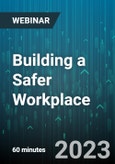In the past few years, we have seen a dramatic increase in sexual harassment training requirements, as states and municipalities have passed legislation requiring it.
In addition, the Equal Employment Opportunity Commission, the federal agency tasked with enforcing violations of anti-discrimination law, says it’s seen a fourfold increase in hits to its website.
But there’s little evidence that sexual harassment training works.
The EEOC 2016 report on harassment indicates that trainings have failed as a prevention tool because they are “too focused on simply avoiding legal liability.”
The question is, what can we do to make our training more effective and reduce, if not eliminate harassment in the workplace?
This webinar will focus on aspects of harassment training that are often overlooked but have proven to be effective in impacted harassment in the workplace.
Instead of the legalities of harassment, a topic that we’ve spent the last 30 years discussing, this webinar will focus on the actual issues that allow harassment to occur in the workplace.
The EEOC defines workplace harassment as “unwelcome verbal or physical behavior that is based on race, color, religion, sex (including pregnancy), gender/gender identity, nationality, age (40 or older), physical or mental disability, or genetic (including family medical history).”
Furthermore, workplace harassment includes bullying, mistreatment, molestation, physical and emotional abuse, overbearing micromanagement, harsh remarks, and obstruction of promotion opportunities. In other words, acts of violation are a good way to describe workplace harassment.
The focus in harassment training has always been about what not to do but There is relatively little focus on what to do. It is not really necessary to teach adults not to grope their co-workers or to pull their genitals out or greet a staffer at the door wearing a towel. The fact that people don’t know, is nonsense.
However, unless we describe the desired and appropriate behavior, it is too easy for individuals to fall into their habits of behavior that are inappropriate or just down-right unacceptable. What that means is that we need to describe the inappropriate behavior, label it as such and then describe the appropriate behavior, along with examples.
This webinar will attempt to highlight some of those behaviors, including:
In addition, the Equal Employment Opportunity Commission, the federal agency tasked with enforcing violations of anti-discrimination law, says it’s seen a fourfold increase in hits to its website.
But there’s little evidence that sexual harassment training works.
The EEOC 2016 report on harassment indicates that trainings have failed as a prevention tool because they are “too focused on simply avoiding legal liability.”
The question is, what can we do to make our training more effective and reduce, if not eliminate harassment in the workplace?
This webinar will focus on aspects of harassment training that are often overlooked but have proven to be effective in impacted harassment in the workplace.
Instead of the legalities of harassment, a topic that we’ve spent the last 30 years discussing, this webinar will focus on the actual issues that allow harassment to occur in the workplace.
The EEOC defines workplace harassment as “unwelcome verbal or physical behavior that is based on race, color, religion, sex (including pregnancy), gender/gender identity, nationality, age (40 or older), physical or mental disability, or genetic (including family medical history).”
Furthermore, workplace harassment includes bullying, mistreatment, molestation, physical and emotional abuse, overbearing micromanagement, harsh remarks, and obstruction of promotion opportunities. In other words, acts of violation are a good way to describe workplace harassment.
Why you should Attend
Harassment and assault is not always about sexual desire. Oftentimes, it is about power and the inequality of women and minorities in the workforce.The focus in harassment training has always been about what not to do but There is relatively little focus on what to do. It is not really necessary to teach adults not to grope their co-workers or to pull their genitals out or greet a staffer at the door wearing a towel. The fact that people don’t know, is nonsense.
However, unless we describe the desired and appropriate behavior, it is too easy for individuals to fall into their habits of behavior that are inappropriate or just down-right unacceptable. What that means is that we need to describe the inappropriate behavior, label it as such and then describe the appropriate behavior, along with examples.
This webinar will attempt to highlight some of those behaviors, including:
- Psychological harassment
- On-line or digital harassment
- Quid pro quo harassment
- Third party harassment
- Retaliation
Areas Covered in the Session
- Hostile workplace
- What to do about bullying
- What is fraternization and what to do about it
- Bystander training
Speaker
Greg Chartier is Principal of The Office of Gregory J Chartier, a Human Resources Consulting firm and is a well-known management consultant, educator and speaker and author of the recently published What Law Did You Break Today? His practice is based on the Business Partner Model of Human Resources, which places its’ emphasis on outsourcing, the use of technology to gain efficiencies and the improvement of managerial skills.
Who Should Attend
- Anyone will benefit from this webinar but those who are responsible for developing and/or conducting harassment training will particularly benefit.








